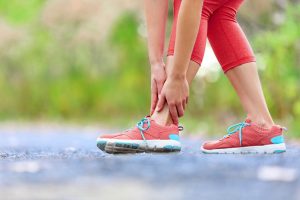
Feet are complex systems, that act as an interface between the rest of the body and the ground. It is a major contributor to shock absorption and propulsion. The shock absorption component comes into play when your foot hits the ground, the propulsion phase occurs while you are pushing off and using your foot as a rigid lever to propel you forward. These are two very different functions with different biomechanical requirements.
During the shock absorption phase, your foot must be relatively pliable and mobile. During the propulsion phase, your foot must regain structural integrity or stiffness for mechanical efficiency. This is a beautiful system design but even small inefficiencies in this system can produce detrimental effects on performance including injury and poor propulsion. Conversely, even small improvements in this system can have a positive effect on performance measurements such as speed, power, and balance.
A foot orthotic needs to provide a rigid lever for propulsion while allowing for shock absorption and terrain adaptation. This need is only magnified in athletes. Whether you are playing cricket, badminton, tennis or golf, your foot is always working on shock absorption and propulsion. To assist in these functions a foot orthotic needs to be properly calibrated to your weight, foot flexibility and activity level. Different athletes and sports require different orthotic sizes and properties, but all require the same biomechanical control and function
Does one need an Orthotic, if the foot hurting?
 This depends on how you would like to approach your training. Would you like to only worry about injuries after they happen, or after they cause a reduction in training? Or would you like to have a more proactive mindset when it comes to your health and performance? In addition to all of the overuse injuries, we are familiar with such as shin splints, Achilles tendonitis, plantar fasciitis, IT band syndrome and patellar tracking dysfunction, inefficiencies in foot function can cause sub-clinical problems (meaning that they haven’t shown up as a symptom yet). It makes more sense to correct these problems before they have a chance to cause tissue breakdown and injury.
This depends on how you would like to approach your training. Would you like to only worry about injuries after they happen, or after they cause a reduction in training? Or would you like to have a more proactive mindset when it comes to your health and performance? In addition to all of the overuse injuries, we are familiar with such as shin splints, Achilles tendonitis, plantar fasciitis, IT band syndrome and patellar tracking dysfunction, inefficiencies in foot function can cause sub-clinical problems (meaning that they haven’t shown up as a symptom yet). It makes more sense to correct these problems before they have a chance to cause tissue breakdown and injury.
About The Author
Dr Sanjay Sharma MS (Gen.Surg), FDFM, FFPM (RCPS Glasgow), MPEFB (IIMB) Podiatric Surgeon & Wound Care Specialist
For booking, appointment call us today!!!
If you have further questions then please contact us on.



